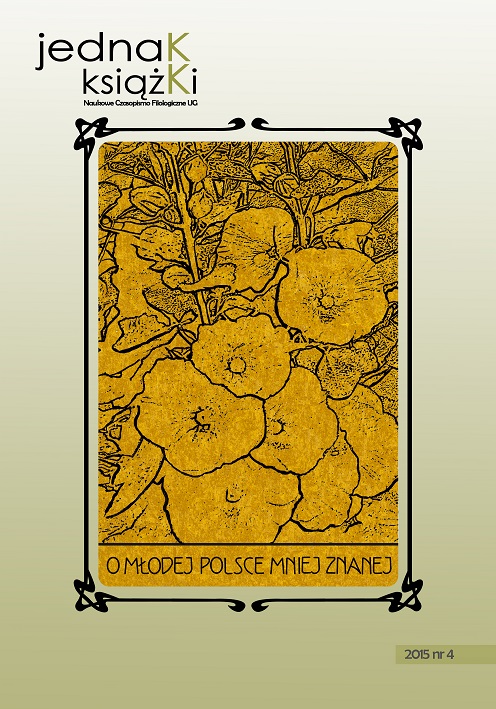The Role of Ancient Chinese Imagination in Taoist Treatise "Huang T’ing Jing" ("The Book of Yellow Court") and Its Reflection in Life and Works by Huang T’ing-Jian
Słowa kluczowe:
“Huang Ting Jing”, internal sight, internal and external spirits, methods of self-improvement, shi and ci poetry, allusionAbstrakt
The Book of Yellow Court (originated, according to different estimations, in the 2nd cent. BC) is the fundamental Taoist internal alchemy treatise devoted to self-improvement and visualization of spirits. The article highlights some aspects of Taoist adept’s practice on his way towards self-improvement related to ancient Chinese beliefs about the human body and human existence in the universe. The reflection of teachings of The Book in the life and works of the Chinese Song era (960–1279) poet Huang Ting-jian has been also shown; the detailed analysis of some of his poems has been made.
The key idea of this article is the Taoist concept of inner peace, concentration on spiritual resources of the follower and waking up--through the power of imagination--so-called Internal Refulgences (Nei-jing, deities of all the internal organs) which, having found an echo in the outside world (External Refulgences, Wai-jing), contribute to the spiritual growth of the Taoist adept’s organism, nurturing of qi energy and, what is the most important, conception and cultivation of the Taoist immortal embryo, which is aimed to bring immortality to the adept. Taoist adherent’s various manipulations with the imagination, as well as creative imagination of Chinese poets that allowed them different transformations and incomprehensible journeys (e.g., to the Celestials), indicate the infinite possibilities of the human intellect, that Chinese people have already known in those old times.
Downloads
Bibliografia
Ge, Hong. 1999. Baopu-Zi (Баопу-Цзы). St. Petersburg: St. Petersburg Oriental Studies.
Huang, Ting-jian. 2001. Complete Works (黃庭堅全集). Chengdu: Sichuan University Press.
Huang Ting Jing with Comments (黄庭经集释). Comment by Liang, Qiu-zi and others. 2005. Beijing: Central Translation Press.
Kleshchevich, Olga. 2013. The Content Problem of 16th–17th cent. Alchemic Treatise as a Manual for Individual’s Spiritual Perfection (Проблема содержания алхимического трактата XVI–XVII вв. как пособия по духовному совершенствованию человека). Abstract of Diss… Cand. of Culturology. St. Petersburg: Russian Pedagogical A. Gertsen University.
Liu, Si-zhuan. Huang Ting-jian and “Huang Ting Jing” (黄庭坚与 «黄庭经»). [URL]: http://blog.sina.com.cn/s/blog_611bd4e4010189or.html.
Shen, Kuo. 1998. Meng Xi Bi Tan (梦溪笔谈) . Guiyang: Guizhou Public Press.
Filonov, Sergey. 2011. Golden Books and Nephrite Letters: Taoist Written Monuments of 3rd–4th cent. (Золотые книги и нефритовые письмена: даосские письменные памятники III–VI вв.). St. Petersburg: St. Petersburg Oriental Studies.
Wang, Fu-zhi. 1981. Zhuang-zi with comments (庄子解). Beijing: Chinese Press.
World Taijiquan Association Website. [URL]: http://taiji-bg.com.
Zhang, Zhen-qian. “Discussing Huang Ting Jing’s Influence on Lu You” (论 «黄庭经»对 陆游的影响). Journal of Beijing Technological University (Social and Scientific Sciences). 13 (1). [URL]: http://www.docin.com/p-287044021.html.

 Uniwersyteckie Czasopisma Naukowe
Uniwersyteckie Czasopisma Naukowe




